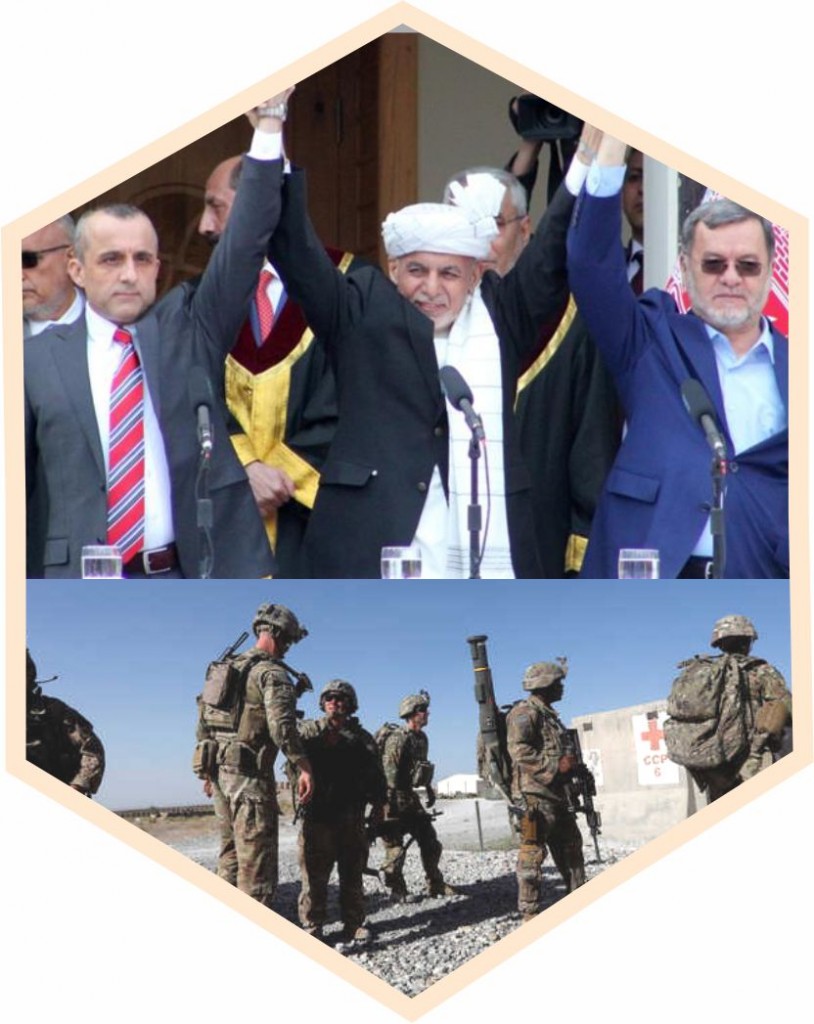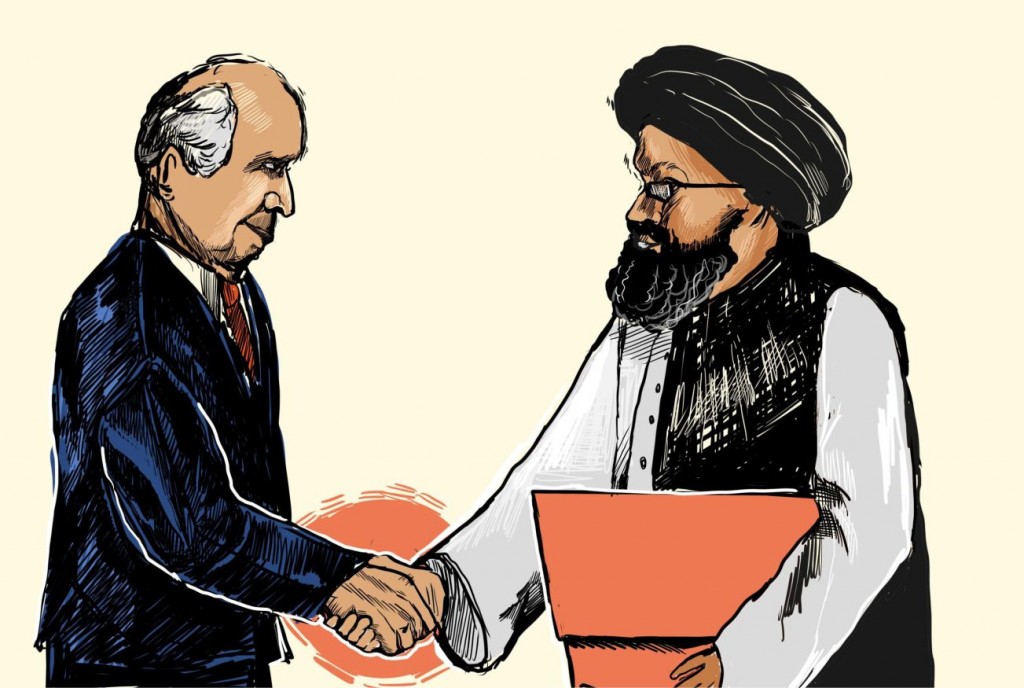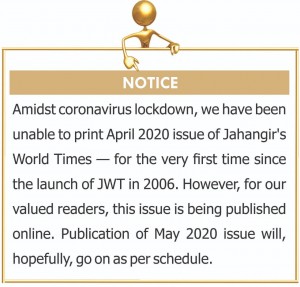US-Taliban Peace Deal What next?
Zafar Iqbal Yousafzai
Finally, the United States and Taliban have signed a peace deal in Doha, the capital of Qatar, after 18-month-long negotiations. As per the terms of the agreement, the United States will start withdrawing its troops within 135 days of the deal and will have to complete it within fourteen months—as per an announcement by a spokesman for US Forces in Afghanistan, the troop withdrawal started on March 09. On the eve of deal-signing ceremony, US Secretary of State Mike Pompeo said that the deal was conditional and that the Taliban would have to keep its promises; must cut its ties with the Al-Qaeda and other terrorist groups; and keep continue fighting against the ISIS. On various grounds, questions are being raised on the future setup in Afghanistan as there are apprehensions that the country might again plunge in a civil war like that of the 1990s.
Why this peace deal has come so late and why Washington has finally given up on a military solution? What will be the potential future setup and whether it will sustain or unravel again? What would be the implications of the US withdrawal and how it would differ from the Soviet withdrawal? What role the Taliban would play in the Afghan parliament? Would the future setup, where the Taliban will be a part of the government or at least a political force, be successful without any fear of spiralling into yet another conflict? What would be the input of the regional countries to the future political landscape of Afghanistan? All these questions warrant answers but most of the experts, in one way or another, are in disarray vis-à-vis the future political setup in Afghanistan.
When the US invaded Afghanistan and ousted the Taliban regime, the world thought that the country would now enter in an era of peace and stability as the latter’s efforts, either of war or peace and reconstruction, had the support of the international community and world powers, as well as regional countries. However, that did not happen. Afghanistan remained mired in perpetual instability. The US-led coalition forces failed to ensure peace there.
 Previously, the US strategy to deal with the Taliban and other associated groups was entirely military-driven. It wanted to eliminate through force all those elements that it considered threat to international peace. Within a couple of years of the US invasion, Pakistan suggested a number of times that the US should strike a peace deal with the Taliban. But, the US ignored the sane advice and continued with its militaristic approach. When the Neo-Taliban emerged and the insurgency intensified year by year after 2004, the US accelerated the search operations and expanded its troop deployment to many additional areas.
Previously, the US strategy to deal with the Taliban and other associated groups was entirely military-driven. It wanted to eliminate through force all those elements that it considered threat to international peace. Within a couple of years of the US invasion, Pakistan suggested a number of times that the US should strike a peace deal with the Taliban. But, the US ignored the sane advice and continued with its militaristic approach. When the Neo-Taliban emerged and the insurgency intensified year by year after 2004, the US accelerated the search operations and expanded its troop deployment to many additional areas.
When Barack Obama assumed office as President of the United States in 2009, Afghanistan was his main focus—he wanted to handle the situation and push it towards a solution, either by military means or through negotiations and diplomacy. His policy, in one way or another, was pragmatic. He enhanced the troop deployment on the one hand, and ordered his Special Representative, Richard Holbrooke, to make efforts to engage the Taliban for a peace process, on the other. First-ever contacts with the Taliban were made in 2009. In fact, the Obama administration had realised that the Afghan war couldn’t be won through military means alone, so it would be wise to initiate, simultaneously, a peace process as well. Later on, the establishment of the Qatar office and other actors’ role contributed to the peace process, which has resulted in a historic peace deal that is likely to bring peace to the war-torn Afghanistan.
Moreover, the current deal is highly important for Afghanistan. All the three main parties to the Afghan conflict, i.e. the United States, the Taliban and the Afghan government, were serious about bringing peace to Afghanistan, even if they had to compromise on some of their own interests. During the last five years, Afghan president, Ashraf Ghani, has been making herculean efforts for peace but they remained futile until the US too became serious. The Trump administration, though very tough on Pakistan in its early days, realised the sensitivity of the issue. President Trump realized that without a deal with the Taliban, he would never be able to restore peace in Afghanistan. Furthermore, following the publication of Afghanistan papers by the New York Times, the Trump administration felt the rage among the people that their administrations covered up the Afghan war from the public, and misled them into believing that the US will win the Afghan war. The Taliban also showed flexibility and keenness for the peace process. The Doha deal includes provisions like the US withdrawal and mainstreaming of the Taliban and the latter, in return, has also agreed not to allow Al-Qaeda or any other terrorist group to use Afghan soil in the future.
If hopes are high after the peace deal, scepticism too is there in various circles that the future of the Afghanistan might be volatile after the US withdrawal. The country might witness another Civil War, much like that in the 1990s after the Soviets withdrew. However, the current situation is quite different from that of the post-Soviet withdrawal period. During that time, three factors played a crucial role in the eruption of the civil war and the subsequent fall of the Najibullah government—the central government, the internal actors (anti-government Mujahideen and warlords) and the external actors (like the Soviet Union, Pakistan, and the United States).
Although the Soviets withdrew, their aid continued pouring in for the next couple of years. The Soviet-backed Najibullah government survived until the aid continued. However, after the downfall of Gorbachev and the subsequent disintegration of the Soviet Union in 1991, Najibullah could not cope with powerful warlords who were now armed with weapons that had originally come into the country for the Mujahideen. Najibullah resigned from presidency ten days before the Peshawar Accord was signed by the Mujahideen on April 26, 1992.
In addition, internal factors, such as an anti-government coalition of Mujahideen, were strong enough to compel Najibullah to resign. Besides, he had no external financial, military or political support to stay in power. The external powers’ role also contributed to the fall of Najibullah. The most active players in the Afghanistan issue, i.e. Pakistan, the United States, and the Soviet Union, changed their roles. The Soviets withdrew and later ended financial support for Afghanistan; the US, having achieved its interests, also washed her hands and went off the scene. However, being a next-door neighbour, Pakistan had to stay involved as its interests in Afghanistan were long-lasting. Pakistan’s relations were not good with the Afghan government due to many reasons, so it wanted to have a pro-Pakistan counterweight in Kabul. After the fall of Najibullah government, Pakistan supported the Mujahideen. However, in late 1994, when the Taliban emerged, Pakistan cashed in on the situation by supporting them and they subsequently dominated Kabul in September 1996.
If we compare the current situation, it resembles the previous civil war. The same main actors are there: internal actors (such as the Afghan government and the US); external actors like Pakistan, China, Iran, Russia, Qatar, and some other gulf countries. All these actors will play their role now as well as in the future.
 The internal actors are serious about negotiations and a future peace settlement. The US and Taliban have inked a deal that obligates the latter to engage in intra-Afghan talks with the Afghan government. Such agreements were not made in the 1990s. The US is not keen to continue its military involvement in the Afghan war and the Taliban, too, are exhausted after a prolonged war that has spanned almost forty years. Each party is gaining something due to the deal and they are happy about it. The US will withdraw from Afghanistan (the foremost demand of the Taliban); Taliban will become a part of the political process (political legitimacy). These gains, materialising after a long struggle, were very favourable to them. Having taken stock of the situation, the Taliban know they can’t rule Afghanistan alone, so it was better to stop fighting and accept a slice of the pie.
The internal actors are serious about negotiations and a future peace settlement. The US and Taliban have inked a deal that obligates the latter to engage in intra-Afghan talks with the Afghan government. Such agreements were not made in the 1990s. The US is not keen to continue its military involvement in the Afghan war and the Taliban, too, are exhausted after a prolonged war that has spanned almost forty years. Each party is gaining something due to the deal and they are happy about it. The US will withdraw from Afghanistan (the foremost demand of the Taliban); Taliban will become a part of the political process (political legitimacy). These gains, materialising after a long struggle, were very favourable to them. Having taken stock of the situation, the Taliban know they can’t rule Afghanistan alone, so it was better to stop fighting and accept a slice of the pie.
Furthermore, being natives, they want their country to move on. As far as the external actors’ role is concerned, it’s too important to have a positive input for the future Afghan setup in shape of support after the US withdrawal. Being the most actively involved in Afghan affairs since long, Pakistan has a crucial role to play. It has often been said that the path to peace in Afghanistan goes through Pakistan. Without Pakistan’s support, any political settlement in the Afghan affairs would be futile. If we look back at the Bonn Conference of 2001 on Afghanistan, Pakistan was misrepresented, which had greatly affected the Afghan settlement. For more than a decade, Pakistan has suffered because of terrorism. It wants to overcome this menace, for which peace in the region in general, and in Afghanistan in particular, is indispensable. Furthermore, by becoming a political force, the Taliban would become instrumental in shaping Pakistan’s interests–which is to block any anti-Pakistan move in the Afghan parliament.
Furthermore, China also has stakes in Afghanistan. Peace in Afghanistan would have numerous positive outcomes for China; it would open a new market for Chinese products; will help China tackle the Xinjiang issue; provide China an opportunity to exploit Afghanistan’s natural resources, and, most importantly, would open Afghanistan up to OBOR (One Belt, One Road) which will connect China with Europe and the rest of the world.
For Iran, a peaceful Afghanistan and mainstreaming of the Taliban would be a good development due to many reasons. It would bring stability in Afghanistan, which directly affects the neighbouring countries. Secondly, due to the US opposition, Iran developed close contacts with the Taliban and also provided them with the much-needed support. It was also believed that Iran provided Taliban with anti-aircraft missiles following the souring US-Iran tension. Moreover, the colossal threat of ISIS to Iran would also be curtailed once the Taliban become a part of the Afghan government. Iran’s relations with the Taliban have been rocky since the Afghan Civil War when the Taliban assassinated the Iranian diplomats in Mazar-e-Sharif. However, the current situation is different; Iran did want the Taliban to compel the US forces to leave Afghanistan, for its own interests.
For India, peace in Afghanistan is a great development, however; it aspires to have an active role there. However, India did not want the Taliban to be mainstreamed. So, it is challenging for India to cope with the situation it may face in a post-US withdrawal Afghanistan.
Last but not least, a peaceful Afghanistan and US withdrawal would serve Russia’s and Central Asia’s interests. Chaos in Afghanistan has also been a threat to Central Asia and the Russian interests in the region. Russia is also supported the Afghan peace process in order to build its clout in the region. The US withdrawal would provide Russia an opportunity to fill the vacuum.
In essence, the interests and priorities of the main actors in the Afghan conflict, in addition to the historical shreds of evidence, prove that the US-Taliban peace deal would be successful in bringing peace to the war-torn country. Although strong scepticism persists in various circles about the future of Afghanistan, the current situation is quite different from that of the post-Soviet withdrawal which led to the Civil War. The failure of the peace agreement seems unlikely as there is only one insurgent group (Taliban) that has a chain of command and works under a proper structure. When the Taliban observed a ceasefire in 2018 on the eve of Eid, not a single bullet was fired.
It is now a test time for the Afghan political factions and groups to take advantage of the peace deal and further pave the way for peace in Afghanistan. Now, it is Afghans’ turn to seize this opportunity and invest in peace.
The writer is an Islamabad-based columnist and researcher. He tweets @yousafzaiZafar5.
 Jahangir's World Times First Comprehensive Magazine for students/teachers of competitive exams and general readers as well.
Jahangir's World Times First Comprehensive Magazine for students/teachers of competitive exams and general readers as well.




